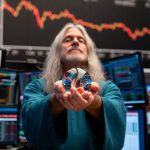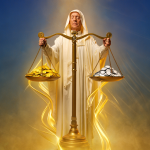
Trading Isn’t a Vibe, It’s a Verdict
Aug 12, 2025
Gut trades feel righteous—right up until they detonate your account. That moment when you “just know” the market’s about to turn? That’s not intuition; it’s your amygdala cosplaying as an edge. Markets aren’t personal development workshops where your feelings matter. They’re probability engines that process capital with algorithmic indifference. Evidence-based trading doesn’t mean you become a boring automaton clicking buttons. It means you survive the slaughter, compound through the chaos, and dominate while others confuse their emotions with analysis.
The seduction of feeling-based trading is obvious: it’s immediate, it’s personal, it validates your ego. You feel smart calling the turn, feel vindicated when occasionally right, feel special for seeing what others missed. But feelings don’t scale. They don’t backtest. They don’t risk-manage. They’re the market equivalent of reading tea leaves—occasionally accurate by accident, consistently destructive by design. Evidence-based trading replaces this emotional rollercoaster with something far more powerful: repeatable edge.
Here’s what the feels-traders never admit: their occasional wins are random noise dressed up as skill. They remember the one time their gut called the bottom but forget the ten times it called bottoms that weren’t. Evidence-based trading inverts this. It forgets the einzelfall—the one-off victory—and remembers only what repeats, what scales, what survives across market regimes. It’s not about being right once spectacularly. It’s about being right repeatedly, boringly, profitably.
Hume: Show Me the Evidence, Not the Theory
David Hume demolished centuries of philosophical certainty with a simple observation: we can’t prove causation, only correlation. Just because the sun rose yesterday doesn’t mean it must rise tomorrow—it just means it always has so far. This skepticism, applied to markets, becomes a superpower. Hume would look at your trading system and ask: “Does this work because of some universal law, or just because it hasn’t failed yet?”
The distinction matters. Most traders operate on what Hume called the “is-ought” fallacy—because something is profitable, it ought to continue being profitable. Because tech stocks have outperformed for a decade, they ought to keep outperforming. Because the Fed has always intervened, they ought to always intervene. But markets don’t respect “ought.” They respect only “is,” and “is” changes without warning or apology.
Evidence-based trading embraces Hume’s empiricism ruthlessly. You don’t trade theories about what should happen—you trade patterns of what does happen. Not because these patterns reveal cosmic truths but because they’ve demonstrated statistical edge. The moment you start believing your patterns represent laws rather than tendencies, you’ve left evidence and entered religion. Hume knew the difference. Most traders learn it through bankruptcy.
Taleb: Skin in the Game or Shut Up
Nassim Taleb transformed risk thinking by introducing a simple filter: skin in the game. The search results confirm his core principle: “no skin, no credibility” . If your beautiful trading system only works on paper, if your backtests assume perfect fills and no slippage, if your risk management requires avoiding all the volatile periods where real money is made—then you’re not trading. You’re cosplaying as a trader while actual traders eat your lunch.
Evidence in trading means survival through real exposure. Taleb, a former options trader himself understands that markets specialize in humiliating theoreticians. Your system might show spectacular returns in backtesting, but if it requires position sizes that would trigger margin calls during normal volatility, it’s not evidence—it’s fantasy. Real evidence includes the path, not just the destination. It accounts for drawdowns, correlation breaks, and the universal tendency of markets to do whatever causes maximum pain to maximum participants.
The search results note Taleb’s focus on “problems of randomness, probability, complexity, and uncertainty” This isn’t academic interest—it’s survival manual. Evidence-based trading must be antifragile, gaining from disorder rather than merely surviving it. If your system breaks under stress, it was never based on evidence. It was based on the comfortable fiction that tomorrow will resemble yesterday. Taleb knows better. Evidence-based traders learn before they burn.
Feynman: The Market Will Lie—Don’t Lie to Yourself Too
Richard Feynman’s first principle of scientific integrity was brutal in its simplicity: “You must not fool yourself—and you are the easiest person to fool.” In markets, this principle separates survivors from casualties. The market lies constantly—false breakouts, failed patterns, regime changes that invalidate everything you thought you knew. But the market’s lies are random. Your lies to yourself are systematic, and therefore far more dangerous.
Self-deception in trading wears many masks. Cherry-picking the timeframe where your system works. Ignoring the asset classes where it doesn’t. Explaining away losses as “manipulation” while taking credit for wins as “skill.” Feynman would subject every trading system to the same scrutiny he applied to physics theories: Does it work across multiple timeframes? Is it robust to parameter changes? Does it require perfect conditions that rarely exist?
The Feynman filter is merciless. Most trading systems fail it immediately. They’re overfit to specific periods—usually the recent past that everyone remembers. They require precise entries that no human could actually execute. They assume liquidity that vanishes precisely when you need it most. Evidence-based trading means breaking your own systems before the market breaks them for you. It means testing until failure, then building from what survives. Anything less isn’t evidence—it’s expensive self-deception.
Why Most Traders Avoid Evidence
Evidence is boring. It doesn’t give you stories to tell at parties. “I run a mean-reversion system with a 1.4 Sharpe ratio” doesn’t have the same ring as “I called the COVID bottom.” Evidence is humbling—it shows that your edge is small, your wins are probabilistic, and your genius is mostly discipline. Evidence doesn’t feed the dopamine loop that makes trading addictive. It replaces the thrill of gambling with the grind of edge execution.
But the dopamine loop is death by a thousand cuts. Each feels-based trade that works reinforces the addiction. Each loss gets rationalized away. The account bleeds while the ego inflates. Meanwhile, evidence-based traders are doing something that looks boring but is actually revolutionary: they’re compounding. Not every day, not every trade, but relentlessly over time. They’re the tortoises in a market full of hares, and they’re the ones who walk out of bear markets with capital and sanity intact.
The psychological resistance to evidence-based trading runs deeper than boredom. It’s an existential threat to the trader’s self-image. If your edge comes from evidence rather than intuition, what makes you special? If anyone could run your system, what’s your value? The answer is discipline, but discipline doesn’t satisfy the ego like calling market turns. So most traders choose ego over edge, stories over statistics, feeling special over being profitable.
Evidence vs. Experience: Don’t Confuse One for the Other
Every trader has war stories. That time they perfectly called the reversal. That setup that printed money for months. That gut feeling that saved them from disaster. These experiences feel like evidence, but they’re usually random noise dressed in narrative clothes. Real evidence is repeatable, quantifiable, and survives out-of-sample testing. Experience is often just selective memory with a brokerage statement.
The confusion between evidence and experience kills accounts slowly. You remember the winning trades more vividly than losers—that’s availability bias. You attribute wins to skill and losses to bad luck—that’s attribution bias. You see patterns in random data because pattern recognition kept your ancestors alive—that’s apophenia. Experience filtered through these biases isn’t wisdom; it’s delusion with scar tissue.
Evidence-based trading systematically strips away these biases. Instead of “I remember when this worked,” it asks “How often does this work across different conditions?” Instead of “My experience says,” it demands “The data shows.” This isn’t dismissing experience—it’s refining it, testing it, separating signal from noise. The traders who last don’t trust their experience. They verify it, quantify it, and discard what doesn’t survive scrutiny.
Live Fire: What Evidence-Based Trading Looks Like in Practice
Evidence-based trading isn’t abstract—it’s mechanical, specific, and battle-tested. Start with defined entry and exit rules that a computer could execute. Not “buy when it looks oversold” but “buy when RSI(14) < 30 and price > 200 SMA.” Quantify risk-reward for every trade. Not “good upside” but “targeting 2.5R with stop at 1R.” This isn’t limiting creativity—it’s channeling it into forms that survive contact with reality.
Backtesting is where dreams go to die and real systems are born. But backtesting alone creates overfit fantasies. Forward testing on live data, with real money, in real time—that’s where evidence lives. Your beautiful backtest might show 300% annual returns. Your forward test will show 30% with 20% drawdowns. The forward test is the truth. Everything else is marketing.
The final filter: regime responsiveness. Markets shift—from trending to mean-reverting, from low volatility to high, from correlation to dispersion. Evidence-based systems acknowledge these shifts. They don’t try to predict them but adapt when they occur. This might mean position sizing that responds to volatility, systems that activate only in specific conditions, or multiple uncorrelated strategies. The evidence isn’t just that something works—it’s understanding when and why it works.
Cold Confidence Under Pressure
Feynman spent his career exposing comfortable lies—in science, in education, in bureaucracy. His method was simple: test everything, assume nothing, and never fool yourself about what the data shows. Trading demands the same intellectual honesty. The market offers infinite opportunities for self-deception. Every random win can be narratized into genius. Every loss can be explained away. But evidence doesn’t care about your explanations.
The only feeling you should trust in trading is the cold confidence of data under pressure. Not the warm glow of being right once, but the steady accumulation of edge over thousands of trades. Not the thrill of calling the turn, but the satisfaction of systematic profitability. This confidence doesn’t come from conviction—it comes from statistics. From knowing your system works not because you believe in it but because you’ve tortured the data until it confessed the truth.
Everything else—every gut feeling, every narrative, every conviction not backed by evidence—is emotional noise waiting to explode. It might feel good in the moment. It might even work occasionally. But it’s not trading—it’s gambling with a philosophy degree. Evidence-based trading strips away these comfortable delusions and replaces them with uncomfortable truths: your edge is small, your wins are probabilistic, and the only sustainable advantage is disciplined execution of tested systems.
The market doesn’t care about your feelings, your theories, or your need to be special. It responds only to capital flows, probability distributions, and the relentless grind of edge versus randomness. Evidence-based trading aligns you with this reality rather than fighting it. It’s not sexy, it’s not exciting, and it won’t make you the hero of retail trading forums. But it will make you something far more valuable: consistently profitable in a game where most players consistently donate. The choice is yours—trade evidence or trade emotions. Only one compounds. The other just compounds mistakes until the account statement forces a reckoning with reality.
Breaking Barriers and Redefining Intelligence










